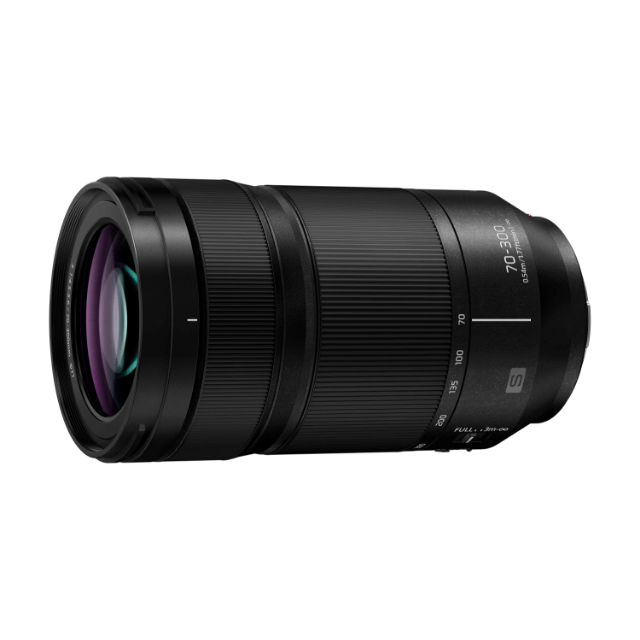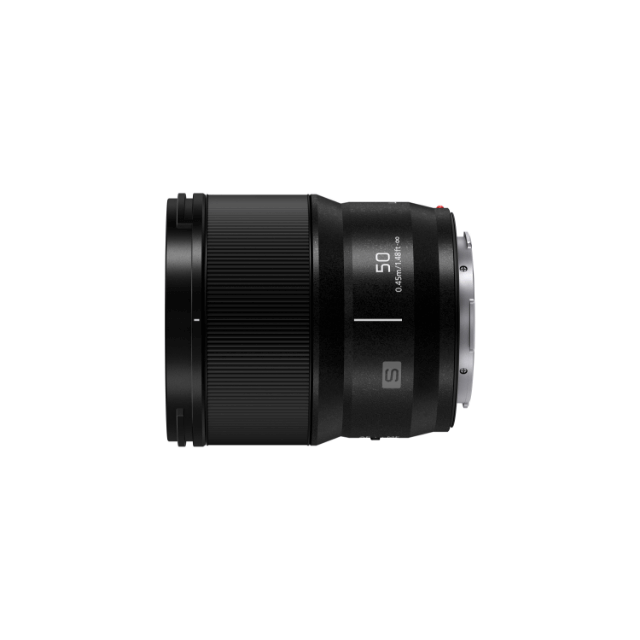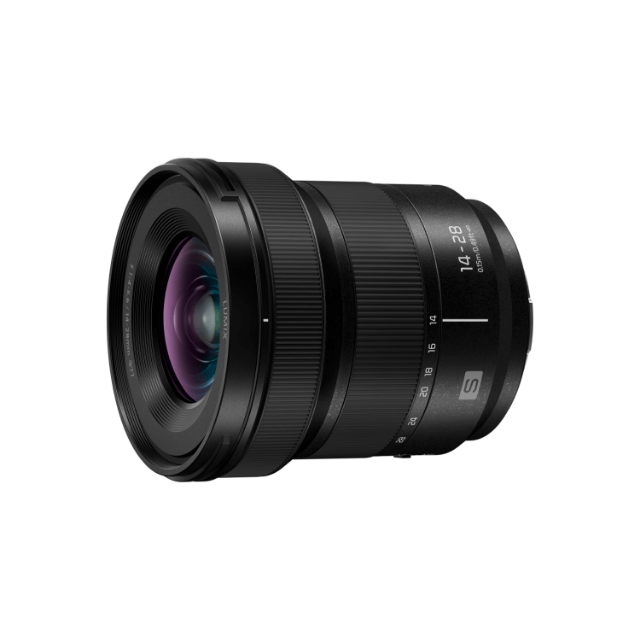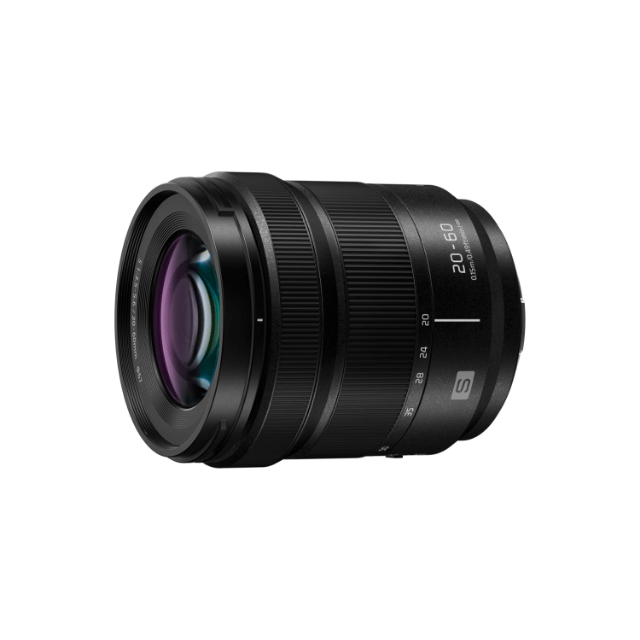
This is the Optical Design Department- Eighth Edition [LUMIX S 18-40 mm F4.5-6.3]
Hello, everyone.
"This is the Optical Design Department" is a series that takes an in-depth look at LUMIX lenses.
In "This is the Optical Design Department", we in the Optical Design Department will explain the lens designs and their features, as well as the dedication and philosophy behind our work that you will not find in our catalogues or websites.
For those who are considering purchasing a camera lens, we encourage you to learn more about the design philosophy behind LUMIX lenses, and for those who already own a LUMIX lens, we hope you enjoy learning about the unparalleled attention to detail and thought that goes into the superb image quality you enjoy in your photography.
This is an article that explains various lenses written by developers full of technical jargon.
By reading this, you too will be peering into the depths of enthusiasm for lens collecting.
The eighth article is about LUMIX S 18-40 mm F4.5-6.3, which was released on Friday, October 25, 2024, explained by Kitada and Shodai.
Introduction
The development of the LUMIX S 18-40 mm F4.5-6.3 began as a lens that would make the most of the concept of the LUMIX S9.
The S9 is a camera for people who regularly take photos and videos with their smartphones, and who want to experience capturing images that cannot be achieved with a smartphone camera.
The development of the S9 was based on the concept of compactness and lightness — a camera that would be easy for many people to pick up and use — alongside a strong emphasis on design appeal.
Following extensive discussions with the product planning department about which interchangeable lenses would best complement the S9's concept, three key development aims were established for the LUMIX S 18-40 mm F4.5-6.3:
1. Outstanding image performance across the entire zoom range, from an ultra- wide 18 mm to a standard 40 mm
2. Optical design achieving the world’s smallest and lightest weight*
3. Mechanical design achieving the world’s smallest and lightest weight*
By putting these concepts into practice, the lens can be used in a wide range of shooting scenarios — from dynamic landscapes and architectural shots at the ultra-wide 18 mm end, to snapshots and portraits with the natural perspective of the standard 40 mm. It also supports ultra-wide-angle, macro-style photography by allowing you to get up close at the wide end while still capturing the background.
The focal length starts at 18 mm, so even those used to wide-angle smartphone photography will find it easy to use.

Small enough to pick up with your fingers
Measuring approximately 40.9 mm in length (when retracted) and weighing approximately 155 g, it is less than 50% of the length and weight of the previously introduced LUMIX S 20-60 mm F3.5-5.6, and we hope you will find it easy to carry with the S9.
Here are the technical details that made 1 to 3 possible.
1. Outstanding image performance across the entire zoom range, from an ultra-wide 18 mm to a standard 40 mm
The diagram below shows the lens configuration of the LUMIX S 18-40 mm F4.5-6.3.

The lens construction comprises eight elements in seven groups, with three aspherical lenses, two ED lenses, and one UHR lens positioned to correct spherical, chromatic, and other aberrations for outstanding image rendering performance.
In particular, as with the LUMIX S 14-28 mm F4-5.6 MACRO introduced earlier, the use of a large- diameter aspherical lens as the second lens element from the front minimises the distortion that tends to occur at ultra-wide angles.
The refractive power of the lens groups that move during zooming is arranged in a three-group zoom configuration — negative-positive-negative from front to back — providing highly effective compensation for aberration variations during zooming.
These features have resulted in a lens that delivers high image rendering performance throughout the entire zoom range, from 18mm ultra-wide to 40mm standard, while remaining compact and lightweight.
The MTF chart shown here also shows high values at both the wide end and the telephoto end.

2. Optical design achieving the world’s smallest and lightest weight*
The LUMIX S 18-40 mm F4.5-6.3 is the smallest and lightest* lens in the world, measuring ø67.9 x 40.9 mm (when retracted) and weighing approximately 155 g.
This section explains the optical design that made this possible.
Like the LUMIX G VARIO 12-32 mm F3.5-5.6 ASPH. MEGA O.I.S., this lens has a retractable barrel mechanism that shortens its length by retracting it when not in use.

To shorten the length of the retractable lens, it is necessary to [a] reduce the overall thickness of the lens groups (groups 1, 2, and 3 shown in the diagram above are called lens groups), [b] reduce the amount of movement of group 2, and [c] reduce the overall optical length at the wide end and make it longer than the optical length at the telephoto end.
This section provides details on [a].
The figures below show the sectional views with the lens retracted and set at the wide end. Turning the zoom lens from the wide end reduces the distance between each lens group to retract the lens.

(Left) When retracted (Right) Wide end
At the very end is a protective glass to protect the focus group.
There are gaps between the first and second groups, and between the third group and the protective glass — the former to accommodate the aperture unit, and the latter to allow movement of the focus group. As a result, the thinner the overall lens groups, the shorter the lens can be when retracted.
To reduce this overall thickness, we reduced the number of lenses, reduced the thickness of each lens, and minimised the air gaps (the spaces between the lenses). However, despite these efforts, we were initially unable to achieve the world’s smallest* size.
After much trial and error, we eventually succeeded in achieving our goal by significantly redesigning the zoom configuration.
Previously, 'negative lead type' lenses with a negative refractive group 1 were generally a four- component zoom configuration of negative-positive-negative-positive or negative-positive-negative- negative (the previously introduced LUMIX S 14-28 mm F4-5.6 MACRO and LUMIX S PRO 16-35 mm F4 have a four-component zoom configuration of negative-positive-negative-negative).
With this lens, the optical design concept has been drastically changed, resulting in a three- component negative-positive-negative zoom configuration. Group 4 was eliminated and the overall thickness of the lens groups was reduced, resulting in the world's smallest* lens at 40.9 mm when retracted.
3. Mechanical design achieving the world’s smallest and lightest weight*
This section is explained by Shodai, who is in charge of mechanical design.
The company decided to develop a compact lens that would be a perfect match for the S9, and began conceptual design with the goal of making it the world's smallest and lightest* lens.
■ Two-stage retractable barrel for compact size
The LUMIX S 18-40 mm F4.5-6.3 adopts a two-stage retractable barrel configuration.
While this configuration allows the lens barrel to be shortened when retracted, it typically results in an increased diameter.
By carefully considering the relationship between the size of each lens element, the mount diameter, and the filter diameter, and by devising a structure for the two-stage retractable barrel, we achieved a near-cylindrical form — with almost no change in outer diameter from back to front when the lens barrel is retracted.
■ Consistency in operation and design
In developing the LUMIX S series (full-frame) interchangeable lenses, particular emphasis was placed on maintaining consistency in external design, thereby ensuring uniformity in operation and functionality — aspects that directly influence the user’s handling experience.
For this reason, the product planning and design teams insisted that the LUMIX S 18-40 mm F4.5-6.3 should also follow the design philosophy established for the S series.
The elimination of filter mounting sections and switches is an advantage in terms of downsizing. However, with interchangeable lenses, the value of the lens as part of a series is also important.
We carefully examined different configurations to evaluate how the inclusion of each feature would impact both size and cost, and whether any increase in size could be offset by rethinking other aspects of the lens design.
As a result, the LUMIX S 18-40 mm F4.5-6.3 remains compact while delivering the same operational functionality as the LUMIX S 20-60 mm F3.5-5.6.
■ Zoom operability as an interchangeable lens
A zoom lens zooms by moving each lens group along cam grooves.
The design of the cam grooves has a significant effect on the quality of the zoom operation. Depending on the layout of the cam grooves, the effect of the internal mechanism crossing uneven surfaces can be felt during operation.
Since the LUMIX S 18-40 mm F4.5-6.3 is a manually operated interchangeable lens, the cam grooves have been designed so that they do not cross, taking into account the effect on the feel of operation.
This is a major design constraint, but the cam grooves and overall component layout have been reviewed many times to achieve the optimum design.
■ Technology developed from previous models
Of course, this reduction in size was not achieved overnight.
It was made possible by making the most of the technologies we have accumulated in the development of compact digital camera lenses and interchangeable lenses (in particular, the Micro Four Thirds LUMIX G VARIO 12-32mm F3.5-5.6 ASPH. MEGA O.I.S.).
Lastly

This article has provided an overview of the optical and mechanical designs behind the LUMIX S series zoom lens, the LUMIX S 18-40 mm F4.5-6.3.
As the world's smallest and lightest* zoom lens starting from an ultra-wide 18 mm, it pairs perfectly with the S9.
We hope you will take this lens with you and enjoy shooting a wide range of subjects — from dynamic landscapes and architectural shots at the ultra-wide 18 mm end, to snapshots and portraits with the natural perspective of the standard 40 mm. It also supports ultra-wide-angle, macro-style photography by allowing you to get up close at the wide end while still capturing the background.
Finally, we have included a selection of photographs taken by our engineers, which we hope you will find inspiring and helpful.

S5II, S 18-40 F4.5-6.3 18 mm, 1/250 sec, F4.5, ISO 100

S9, S 18-40 F4.5-6.3 40 mm, 1/125 sec, F6.3, ISO 200

S9, S 18-40 F4.5-6.3 18 mm, 1/25 sec, F4.5, ISO 1600

S5II, S 18-40 F4.5-6.3 18 mm, 1/400 sec, F8, ISO 100
* For interchangeable full-frame AF mirrorless zoom lenses. As of October 9, 2024. Researched by Panasonic.







